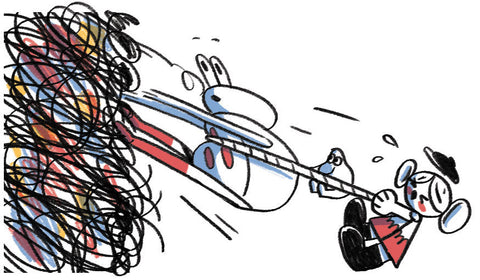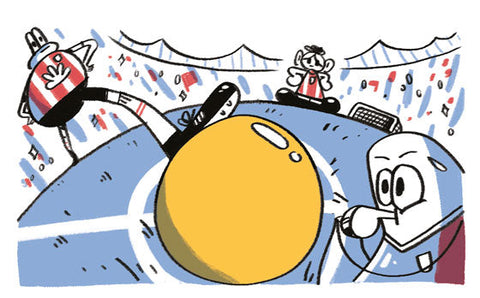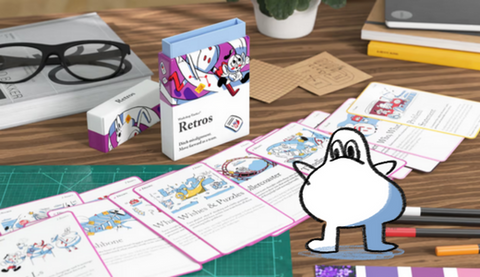We know - writing a meeting agenda doesn’t sound like the most important skill to master.
But Pip Decks began with a vision to ditch dull, ineffective meetings. And you bet workshops using workshop tactics are better with an agenda!
There’s an art to writing a good meeting agenda… or is it a science? There are lots of elements that you can include, each of which can be personalised to suit the meeting and the recipients.
And why put in all this effort? Well, the benefits of a well-written agenda could include:
- Higher response rate
- Higher attendance
- Better preparation work from attendees
- Easier timekeeping
So, let’s get started. We’ll assume that the meeting agenda is going to be included as part of the meeting invitation, so it’ll be digital and can include links and attachments.
Who should write a meeting agenda?
If you’re reading this, there’s a good chance you are either about to write a meeting agenda, or you’re going to ask someone else to do it! So who’s the right person for the job?
Well, usually it’s the facilitator. Assuming that’s you - you’re the one who knows what’s needed to make a success of the meeting or workshop. You’ll be responsible for keeping everyone to time, and you will probably have a say in who’s in the room in the first place.
It’s not a perfect world, so there will be plenty of times when people have to create the meeting agenda for a meeting they aren't facilitating, or even attending. If you’re in that situation, these rules still apply - you might just need to ask the facilitator for some of the key details.
Writing a meeting agenda
This is a multi-step process, and not all of the steps will be relevant all of the time. So, pick and choose what you think you need to do. We’ll explore each of the steps in a little more detail below.
How to write a meeting agenda
- Choose a short, meaningful, interesting title
- Add any crucial logistical information
- Include one overarching objective that must be achieved by the end of the meeting
- Include bold instructions up top if any pre-work is required
- List the topic(s) and sections with loose timings
- Add any links to further information or contact details if required
Writing a title for your meeting agenda
Sure, you could just go with “Project A workshop” or “Team meeting”. But how many times has a meeting initiation landed in your inbox with a vague title while you’re busy on something else and you’ve just ignored it?
Tell people what you’re aiming to accomplish, and they might just hit that ‘Accept’ button straight away. Using a question in the title can also be a powerful move. For example:
- Project A brainstorm: what’s your craziest idea?
- Monthly goal-setting: what’s our BHAG*?
- Project B wash-up: what went wrong?
*If you don’t know, this stands for Big Hairy Audacious Goal. You should try setting one!
Adding crucial information to your meeting agenda
The meeting invitation should cover the basics (time, date, location/conference call link). But there are a few elements you’ll need to add yourself, if they apply. For example:
- If the meeting will be recorded
- If you would like remote attendees to have their videos on or off
- If you would prefer everyone to be there in person, or online only
- If you have any specific requirements, such as ‘no phones or laptops out’
- If any external guests are going to be in attendance
Stating an objective on the meeting agenda
If you include no other text on your agenda, include an objective. This serves so many purposes. It helps people understand what is expected of them and why they have been invited, and it shows that you value their time. It also gets the cogs turning in advance, so they have time to think around the subject.
Include details of any pre-work required
If you need people to do something prior to the meeting, you’ll need to make it very clear. State what the pre-work is explicitly! That could be as simple as “Take some time to reflect on any additional skills you think the team needs as we move into the next stage of the project”, or as involved as “Gather two or three examples of other products that aim to fill the same niche”.
However! If you’re going to ask people to bring something with them, make sure you use it. That can mean dedicating enough time to talk through the examples that everyone has brought, or creating a list of resources to circulate.
Another way to gather information from attendees prior to a meeting is via a survey link in the agenda. If you do this - and especially if it’s a smaller group - keep an eye on whether everyone has filled it in and send a reminder when you get closer to the meeting if they haven’t. And make sure you share the results, or the insights you have gathered from them, with the attendees (either before, during or after).
How to decide on timings for your meeting agenda
Ah, the bane of many a facilitator’s existence. How do you decide how long to allocate to each section of the meeting?
It’s not easy, as you can run ten identical activities with different groups (or even the same group!) and it will take ten different amounts of time. So all you can do is make an educated guess, add in a buffer and make sure you’re strict in your facilitation on the day.
When writing the meeting agenda, think about the following things related to timings:
- What would happen if you didn’t include this section? If nothing, remove it!
- Which bits take you the closest to your objective? Don’t leave these things until the end, in case you run out of time.
- Which things have to be done in a specific order, and which can go anywhere?
- Which activities can most easily be hurried, and which absolutely need to take as long as they take (e.g., you don’t want to skip anyone during the icebreaker or when sharing the pre-work that has been done)?
That will help inform the structure of your meeting.
What else can you add to your meeting agenda?
Remember, many people won’t actually read to the end of your agenda. Some might not even read it at all! You can always email a copy of it, or nudge people on whatever comms platform you use, if you think it hasn’t been given the attention it deserves.
That said, the end of the agenda is a nice place to add some of the following:
- A short bio of any guests that are attending
- Minutes from the last relevant meeting (see how to take meeting minutes)
- Links to useful resources or thought leadership articles around the topic
- A quote or image that sums up the intended outcome of the meeting
If you’ll be writing meeting agendas a lot, you might want to set up a meeting agenda template with some of these details and reminders. Once people see your agendas, they might even ask you for a copy!
And if you haven't got a full itinerary for your meeting yet, why not check out some of tried-and-tested workshop tactics? We've got sessions for brainstorming, goal setting and more!









